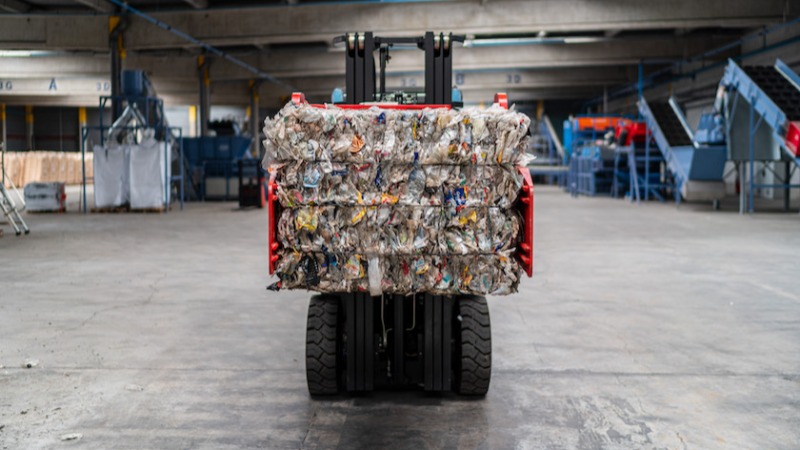Insights - November 11, 2025
Building the Future: How Priority Action B4 Is Driving Decarbonisation in the Built Environment


Written by Malena Schmidt 4 min read
The built environment accounts for 37% of global carbon emissions (UNEP). Yet it also presents one of the greatest opportunities for transformative climate action. That is the ambition behind Priority Action B4, a collaborative initiative uniting various stakeholders, including governments, NGOs, and private sector leaders to accelerate the decarbonisation of the construction and building sector.
Led within the Buildings Breakthrough Initiative, Priority Action B4 fosters public-private partnerships to reimagine how we design, construct, operate, and ultimately decommission buildings. Governments contribute enabling frameworks, such as policy reforms and pilot programmes, while private actors bring technological innovation, financing mechanisms, and advocacy efforts. At the centre of this approach lies a commitment to systems thinking and lifecycle sustainability.
A Lifecycle Approach to Sustainable Building
Priority Action B4 promotes a comprehensive lifecycle strategy, embedding sustainability into every phase of a building’s life. This strategy is built around five core pillars:
Passive building design*
Decarbonised construction materials
Sustainable construction processes
Efficient operation and maintenance
Circular end-of-life approaches
By integrating these principles from the beginning, the initiative ensures that climate ambition translates into measurable environmental and economic gains.
Design: The Foundation of Sustainability
The journey to net zero starts on the drawing board. Early-stage design decisions determine how energy-efficient, adaptable, and comfortable a building will be over time.
Passive strategies, such as natural ventilation, daylighting, and thermal massing, significantly reduce energy demand from the start. Integrating renewable energy systems and prioritising circular, low-carbon materials furthers this impact. With tools like Building Information Modelling (BIM) and Life Cycle Assessment (LCA), architects and engineers can now evaluate and optimise the environmental footprint before a single brick is laid.
Construction: Translating Ideas into Impact
Construction is where plans become physical reality and every material choice, logistic solution, or construction method has a long-term effect on a building’s carbon footprint and resilience.
Emerging technologies such as AI-optimised HVAC systems, and water reuse are raising performance standards. Prefabricated, modular techniques are reducing construction times and material waste. Meanwhile, digital tools allow for transparent monitoring and traceability, ensuring sustainability goals are upheld throughout the process.
Use Phase: Everyday Efficiency, Elevated
After handover, the largest source of emissions is the day-to-day operations. Heating, cooling, lighting, and water consumption all play a role, but also offer significant potential for reduction.
Smart energy management systems, efficient appliances, and demand-response technologies allow buildings to continually optimise performance. Simple interventions, like insulation upgrades or smart thermostats, can deliver both carbon savings and improved occupant wellbeing. Sustainability, in this context, becomes a lived experience.
End-of-Life: Designing for Regeneration
Sustainable buildings do not end with demolition. Circular end-of-life strategies view buildings as reservoirs of reusable materials.
By incorporating design-for-disassembly principles and material passports, construction can shift from linear extraction to regenerative loops. Concrete can be crushed and repurposed, steel remelted, glass reprocessed, and in some cases, whole building components reused. Water systems can be designed for reclamation. This not only minimises waste and emissions but fosters a resource-efficient economy.
What’s Next: Scaling What Works
Priority Action B4 is more than a vision, it is a deployment platform. It supports real-world adoption through case studies, technical exchanges, and actionable insights gathered through global collaboration.
To this end, the Catalogue of Climate Solutions for Buildings, a joint publication by UNEP, GlobalABC and SIF was released on November 13. This publication showcases a wide array of real-life use cases: concrete examples of solutions deployed at every stage of a building’s lifecycle, from passive design strategies to circular dismantling methods. By highlighting the enabling conditions, these cases demonstrate what success looks like in practice, and how it can be replicated.
A Call to Build Better
Reaching net zero in the built environment will not happen through innovation alone. It requires coordination, investment, and scale. Priority Action B4 exemplifies how a lifecycle mindset and shared commitment can drive forward decarbonisation, not just in theory but in practice.
The message is clear: when buildings are designed to be efficient, built to be clean, operated to be smart, and dismantled to be circular, they become part of the solution.
Now is the time to accelerate action. Explore the full Catalogue of Climate Solutions for Buildings and discover how sustainable construction is already shaping a better future.
________________________________________
* Passive building design is an approach that uses the building's orientation, materials, and layout to maintain thermal comfort and minimize energy consumption for heating and cooling. (University of Strathclyde)

Written by Malena Schmidt on November 11, 2025


